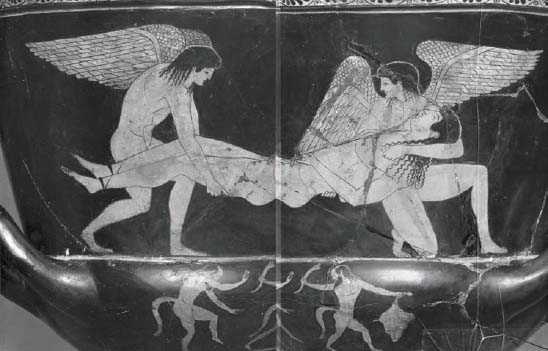Art of the Ancient World, C. 5000 B.c.e.–400 C.E.Ancient Greek Art |
What innovations were made by Euphronios? |
Active in Athens between 520 and 470 B.C.E., Euphronios was a vase painter who worked in the red-figure style. The red-figure style of ancient Greek vase painting developed after the black-figure style used by artists such as Exekias. Euphronios’ work demonstrates a masterful ability to use the red-figure technique to naturalistically depict the human form in multiple poses. Euphronios signed eighteen of his vases, sometimes as a painter, and sometimes as the potter. One his most famous works is a bowl-like calyx krater depicting the Death of Sarpedon (c. 515 B.C.E.). The story comes from Homer’s Iliad and the painting shows the deities Hypnos and Thanatos (gods of sleep and death, respectively) carrying the dead body of the warrior Sarpedon. Hermes, the messenger god, holds a staff decorated with snakes called a caduceus, and wears a winged hat. Hermes watches over the scene and ensures the safe arrival of Sarpedon’s body in the underworld. The figures in the dignified and detailed scene were rendered using foreshortening, an innovative technique in which body forms are distorted so that they appear to recede from the viewer, which creates 48 a sense of real space in the painting.

This vase depicting the death of the mythological warrior Sarpedon is an example of the classical Greek painting style. Dynamic red figures are painted against a black background. Earlier Greek artists painted the opposite—black figures on a red background.
